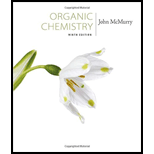
a)

Interpretation:
The names of the
Concept introduction:
The longest carbon chain containing the double bond to be chosen. Based on the name of the parent compound - the alkene name ends with the suffix -ene. The chain is to be numbered from the end that gives the lowest number to the carbon in double bond. Substituents are to be numbered according to their positions in the chain and listed alphabetically. The position of the double bond is indicated by giving the number of the first alkene carbon before the name of the parent. The stability of alkenes can be explained using the concept of hyperconjucation or based on the bond strengths. Further a compound with more number of sp3-sp2 bonds is more stable.
To name:
The alkene given and to state which is more stable.
b)

Interpretation:
The names of the alkenes given are to be given. Among the two compounds which is more stable also is to be stated.
Concept introduction:
The longest carbon chain containing the double bond to be chosen. Based on the name of the parent compound - the alkene name ends with the suffix -ene. The chain is to be numbered from the end that gives the lowest number to the carbon in double bond. Substituents are to be numbered according to their positions in the chain and listed alphabetically. The position of the double bond is indicated by giving the number of the first alkene carbon before the name of the parent. Among cis and trans isomers, the cis isomer is less stable than the trans isomer, because of the steric strain between the two larger substituents on the same side of the double bond.
To name:
The alkene given and to state which is more stable.
c)

Interpretation:
The names of the alkenes given are to be given. Among the two compounds which is more stable also is to be stated.
Concept introduction:
The maximum number of carbons in the ring is counted. Based on the name of the parent cycloalkane - the cycloalkene is named with the suffix -ene. The cycloalkane is numbered such that the double bond is in between C1 & C2 and the first substituent has the lowest number possible. Usually the position of a double bond is not shown in the name because it is always between C1 & C2. The stability of cycloalkenes can be explained using the concept of hyper conjucation or based on the bond strengths.
To name:
The alkene given and to state which is more stable.
Trending nowThis is a popular solution!

Chapter 7 Solutions
Study Guide with Student Solutions Manual for McMurry's Organic Chemistry, 9th
- Draw the products of the hydrolysis reaction between the ester molecule and water. Determine the products of the following reaction.arrow_forwardWhat is the unsaturation number for compounds with the formula C₂H₁₂Cl₂? O õ õ o o 4 3arrow_forwardIndicate the product obtained (formula). F3C. CF3 Br NH2 NH OMe K2CO3, DABCO, DMFarrow_forward
- What are the missing intermediates 1, 2, and 3? Please include a detailed explanation explaining the steps of malonic ester synthesis. Please include drawings of the intermediates and how they occur.arrow_forwardThe following intermediates are to proceed by acetoacetic ester synthesis. What are intermediates 1 and 2 plus the final product 3? Please include a detailed explanation and drawings of the intermediates and how they occurred.arrow_forwardThe chemical formula of "benzimidazole E" is C7H6N2. Draw it.arrow_forward
